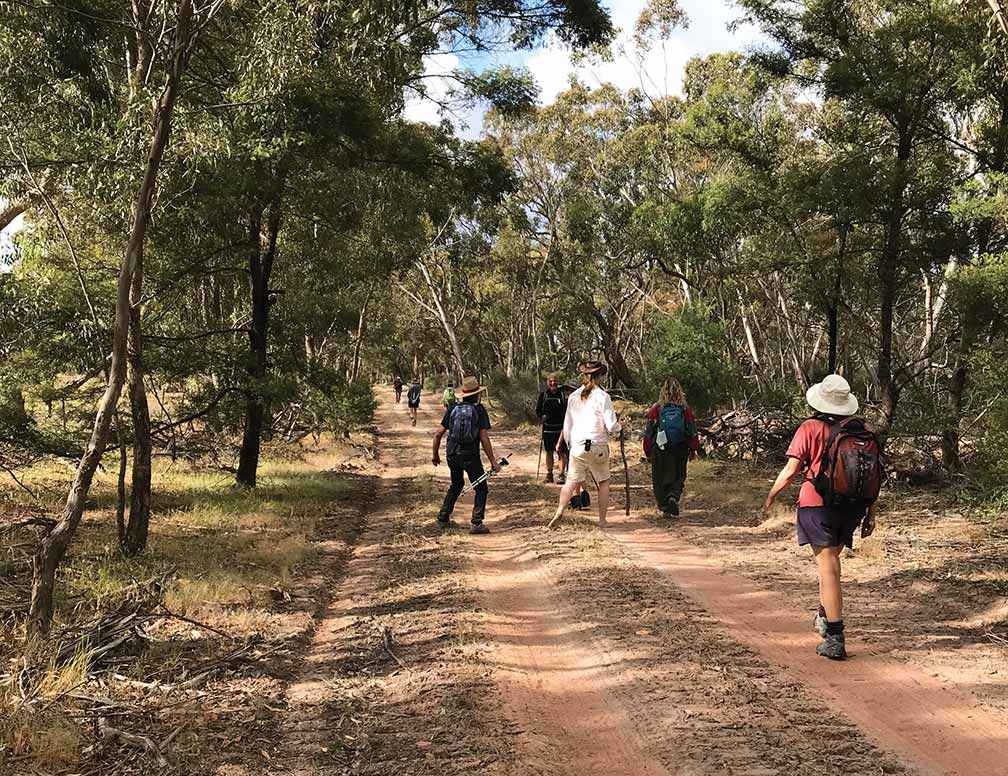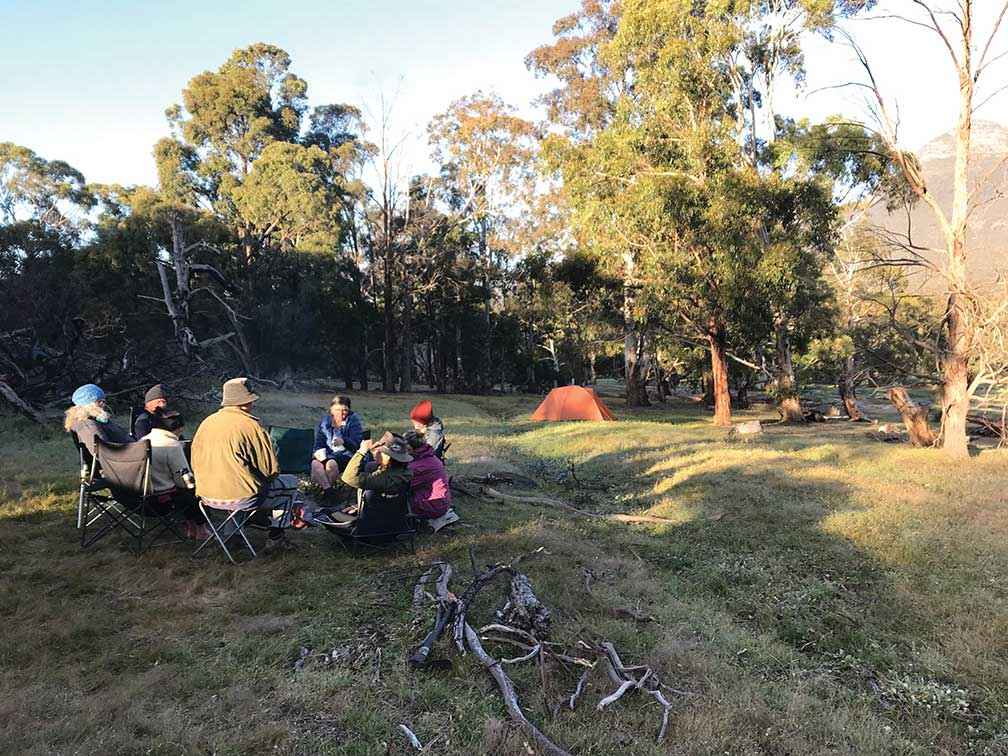Victorian Landcare Magazine - Spring 2020, Issue 79

The Lake Bolac Eel Festival Healing Walk began when Lake Bolac local, and acclaimed musician and author, Neil Murray, had the idea of walking with Traditional Owners along the Hopkins River, following the path of the migrating eels.
The first walk took place in 2005 and preceded the first Lake Bolac Eel Festival, Kuyang Lapakira – Plenty Eels. A Healing Walk has taken place before each festival since then.
Each walk is a selection of past experiences, links and places, all pulled together by the organisers for that year. It exists as it is undertaken by the walkers.
In late November 2019 the walkers included cooks, artists, musicians, writers, plant-lovers, poets, orators, and filmmakers. A few of us gathered at Lake Bolac to load our swags, bags, hopes and fears into a couple of four-wheel drives. We travelled to our starting point east of Gariwerd, in Djab Wurrung Country.
While I waited beside the road to wave down the latecomers, yellow-tailed black cockatoos headed for their night-time roosts, and things started to slow down. It had taken a lot of energy and organisation to prepare for five days walking, now we were settling in.
The walk was led by Neil Murray and Lou Hollis from the festival crew, with support from Daryl Clark and his trusty truck. Most of us had planted a few trees in our lives, and some of us had been involved in Landcare, Coastcare or social justice issues for decades. We all obviously liked to walk.
The walk skirted around Gariwerd, passing through stringybark and red gum forests. Most of the walk was undulating to flat; dirt tracks, a little bitumen, or through the forest. There was one monster hill. Neil’s advice was to just do three steps then stop. I managed 5–10 steps before pausing to look back over the wetlands of the magnificent Wannon River floodplain. We met with the Wannon River on many occasions. In that country the river braids and splits, feeds wetlands and soaks, then comes back together.

Above: Lake Bolac Eel Festival Healing Walk progressing through woodland.
Each person brought their stories. We laughed a lot, cooked communally, swam in brown water and slept on the ground, some of us sharing the comforts of the open-air tarp. When you aren’t doing much, there is a lot more to see and hear. We listened to each other, and also to the other-than-human presences around us.

Above: The walkers gathered around the campfire in the evening.
As Neil Murray writes in his history of the walk: “When you walk in country, things come to you. Your senses sharpen. Your perception of time and distance adapts to walking pace and you see everything within that parameter. You are alert to detail. It’s not just that you notice particular rocks, soil, tracks, grasses, plants, trees, insects, lizards, birds and animals – but you begin to discern why you see them. What caused them and what relationship they have with something else. In short, everything speaks. Everything has a story.”
On our last evening we camped at Walker Swamp Restoration Reserve in the sand forest. The growling grass frogs and mopokes sang us to sleep. In the morning we heard brolgas calling through the mist. The final day we walked through huge red gums on our way to a tea-coloured farm billabong for a last swim and lunch.
A walk like that rearranges things. The walk slows people down. It gives time. There is an intimacy to sharing food, sleep, blisters, and stories day after day. Maybe we just had a very special group, but I suspect the spirit in which the walk is conducted allows that to happen. And somehow those things are healing. We fell into the rhythms of walking, of each other, and of the country. There were hiccups and breaks, it wasn’t all peace and love, but regaining the rhythm afterwards felt good.
Why do people go on a healing walk? Not everyone said why they were there. Maybe it was to heal something in themselves, to help others heal, or to heal the country as we walked. All these things happened. There was a lot of care for people and for land. Caring for both can be quiet, action isn’t always required.
Somehow the experience of the walk has made these last few months of isolating, not moving, and social distancing a little easier for me. Walking day after day, living only with what you have, getting along with whoever you are with, not achieving, listening.
In 2020 the Lake Bolac Eel Festival was held over because of COVID-19, but hopes are high for 2021. As Neil Murray says, “Nothing good is ever lost. It’s all just residing in the shade.”
I only took three photographs during the walk, so thank you to my fellow walkers who shared theirs for this article.
Jodie Honan is a member of the South Beach Wetlands and Landcare Group.
For more information on the Lake Bolac Eel Festival and healing walk go to www.eelfestival.org.au